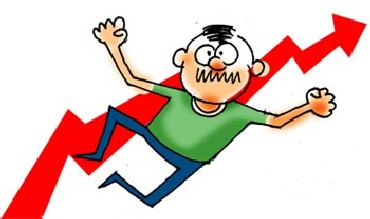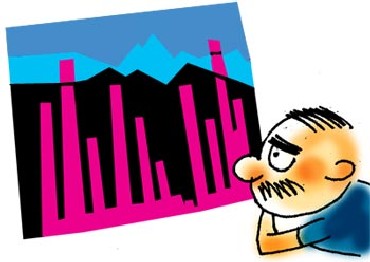 | « Back to article | Print this article |
Can India create a sustainable environment for growth?
The Index of Industrial Production (IIP) numbers for May 2011 will further dampen investor sentiment and put at risk the growth projections for the year.
The IIP growth number of 5.6 per cent in May 2011 over May last year is the lowest in nine months. A downward trend in IIP has been seen since December 2010, with brief interludes of good news.
The slowdown in industry is a fact and needs to be tackled head-on. Of the three major components of the index, only electricity (10.3 per cent versus 6.1 per cent) has done better year on year. For the corresponding period, mining (1.4 per cent versus 7.9 per cent) and manufacturing (5.6 per cent versus 8.9 per cent), which comprise approximately 87 per cent of the weighted index, have declined sharply.
Within manufacturing, the lower year-on-year growth numbers for both capital and intermediate goods indicate declining investment and manufacturing activity.
Click NEXT to read more...
Can India create a sustainable environment for growth?
The increase in interest rates has definitely moderated demand, resulting in lower private investment. This largely explains the 1.4 percentage point decrease (5.9 per cent versus 7.3 per cent) in capital goods production.
The more severe decline in intermediate goods (0.9 per cent versus 11.7 per cent) reflects conservative demand forecasts by manufacturers.
A pickup in investment and demand typically lags policy by a few months, which suggests the gloomy sector numbers may be here to stay for some more time.
What explains the sharp fall in mining? The decline in the index can be ascribed to a virtual stasis in the coal industry as well as a significant drop in gas production.
The coal industry till recently was reeling under the onslaught of public and ministerial activism on land and environment issues.
Click NEXT to read more...
Can India create a sustainable environment for growth?
The change of guard at the ministry of environment and forests would hopefully ease the constraint imposed by this ministry on industrial growth.
The coal sector must also take its share of the blame. Non-production from sites already granted brings it no credit. While a clear, transparent and fair land acquisition and mining policy is an absolute necessity, its absence does not explain the five-fold drop in year-on-year growth rates.
Government estimates for FY 2012 suggest the agriculture sector will grow four per cent and services 10 per cent.
If the sectoral shares of GDP for agriculture, industry and services are taken as 16 per cent, 28 per cent and 56 per cent respectively, GDP should grow by approximately 7.9 per cent, assuming there is no further pickup in industrial activity during the rest of the year.
Click NEXT to read more...
Can India create a sustainable environment for growth?
These are impressive numbers for a large economy like India in the midst of a worldwide economic slowdown, even if they do not match the nine per cent plus growth rates that were glibly assumed to be par for the course not long ago.
More to the point, these projections are unlikely to pressure the Reserve Bank of India to go slow in its efforts to alter inflationary expectations. Perhaps India needs more realistic expectations for its manufacturing sector.
There are too many structural impediments that stand in the way of a sustained 15 per cent annual growth in domestic manufacturing.
The focus should be on engendering a policy environment that provides traction across the sector. The desired growth numbers will follow.




